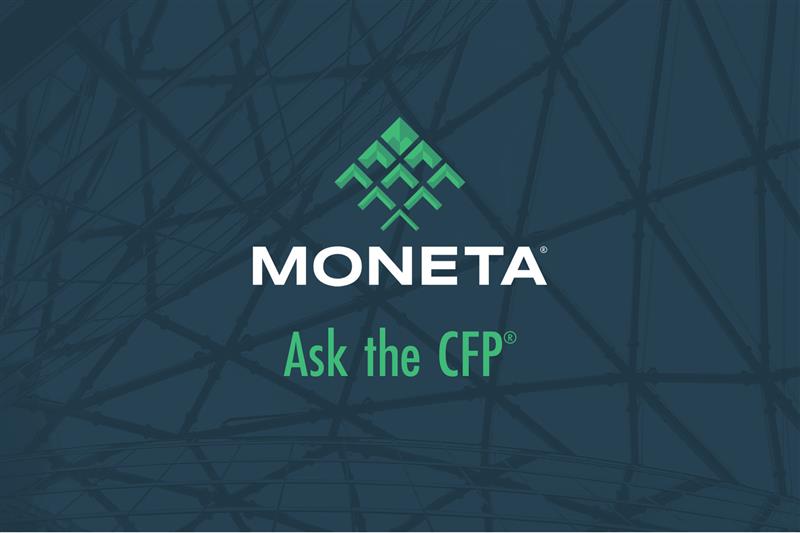[et_pb_section fb_built=”1″ admin_label=”section” _builder_version=”4.16″ da_disable_devices=”off|off|off” global_colors_info=”{}” da_is_popup=”off” da_exit_intent=”off” da_has_close=”on” da_alt_close=”off” da_dark_close=”off” da_not_modal=”on” da_is_singular=”off” da_with_loader=”off” da_has_shadow=”on”][et_pb_row admin_label=”row” _builder_version=”4.16″ background_size=”initial” background_position=”top_left” background_repeat=”repeat” global_colors_info=”{}”][et_pb_column type=”4_4″ _builder_version=”4.16″ custom_padding=”|||” global_colors_info=”{}” custom_padding__hover=”|||”][et_pb_text admin_label=”Text” _builder_version=”4.16″ background_size=”initial” background_position=”top_left” background_repeat=”repeat” global_colors_info=”{}”]
Hello everyone and welcome to this month’s Ask the CFP segment. This month’s question is, “How do 529 college plans affect financial aid?” While many of our clients aren’t focused on financial aid opportunities due to their incomes or assets, some do wonder how assets such as 529 plans affect financial aid for grandchildren or if a child were accepted into a very expensive college. For example, the University of Chicago estimates the cost of attendance for on-campus students around $82,000 per year. That’s about $330,000 for four years without inflation for one child. Add a sibling or two into the equation and it’s worthwhile discussing this topic.
529 college savings plans offer potential deductions on state income tax as well as the ability to invest the dollars tax-deferred over time. If using on qualified education expenses, 529 assets can then be distributed tax-free. So what happens to financial aid opportunities, such as grants and Federal loans, if someone saves well to a 529 plan? When applying for financial aid, a student or parent completes the FAFSA form, which is administered by the US Department of Education. Depending on the college, another form called the CSS may also be required. The FAFSA and the CSS each ask about the incomes and assets of students and parents. This information is used to determine something called the Expected Family Contribution. It’s the amount of money the FAFSA or CSS determines your family is able to pay for college in a given year.
The FAFSA and CSS treat assets such as savings accounts and non-retirement investment assets as available to spend on college. However, the rate applied to cash and investments is different with each form. With FAFSA, up to 5.64% of these assets are counted in the Expected Family Contribution, while the CSS uses a rate of 5%. In other words, parents with $100,000 of cash or investment assets would have up to 5.64% of those assets, or $5,640, counted in their Expected Family Contribution with FAFSA. When it comes to 529 plans owned by parents, they’re treated the same as cash and non-retirement investment assets. In other words, they don’t “hurt” the chances of financial aid any more than saving up cash in the bank. Instead, 529 plans offer potential tax advantages other savings vehicles can’t offer for education expenses.
When a grandparent owns a 529 plan, the rules are a bit different. Grandparent-owned 529 plans aren’t treated as part of the Expected Family Contribution for the FAFSA, but they are for the CSS form. Also, while grandparent-owned 529 plans are treated favorably for the Expected Family Contribution with FAFSA, once assets are distributed from a 529 plan from a grandparent to a student, that income must be declared on the FAFSA. In other words, 529 dollars coming from grandparent to grandchild to pay for college appears as income in the name of the student, which is assessed at 50%. This can greatly reduce financial aid opportunities, but there are ways to manage this based on when the dollars begin coming out of the 529 plan.
Overall, the financial aid system is a bit complicated, but when it comes to 529 plans, I feel they’re a great planning tool for college. In other words, I’ve never recommended against a 529 plan for financial aid reasons.
If you have a question about this topic or have a question for next month’s video, please send it to Dtroyer@MonetaGroup.com. Thanks for watching and we’ll see you next month.
The opinions voiced in this material are for general information only and are not intended to provide specific advice or recommendations for any individual. Please speak with a qualified tax or legal professional before making any changes to your personal situation.
©2022, Moneta Group Investment Advisors, LLC. Trademarks and copyrights of materials referenced herein are the property of their respective owners. These materials have been prepared for informational purposes only based on materials deemed reliable, but the accuracy of which has not been verified. Past performance is not indicative of future returns. You cannot invest directly in an index. These materials do not constitute an offer or recommendation to buy or sell securities, and do not take into consideration your circumstances, financial or otherwise. You should consult with an appropriately credentialed investment professional before making any investment decision.[/et_pb_text][/et_pb_column][/et_pb_row][/et_pb_section]



